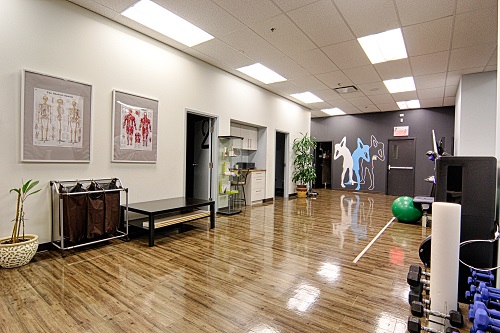From computers, to televisions, to desk jobs, modernization has delivered incredibly positive changes to our professional and personal lives, from innovative medical developments to our daily simple conveniences. However, with this revolution, people have become more sedentary and far more connected to their jobs.
According to statistics Canada and Centers for disease Control and Prevention (CDC):
- The common person is sitting down for an average of 9.3 hours a day- this is even greater than the time spent sleeping (7.7 hours a day). Our bodies were not built for this and the consequences of doing so are beginning to show.
- Those with sedentary jobs have twice the rate of cardiovascular disease as people with non-sedentary jobs.
- As soon as you sit down, calorie burning drops to 1 per minute and enzymes that help break down fat drops to 90%
- After 2 hours of sitting, the good levels of blood cholesterol drops to 20%
- Sitting for more than 6 hours per day makes you 40% more likely to die within 15 years than someone who sits for less than 3 hours per day. Right now, as you sit there and read this at your computer, you are doing one of the worst things you can do to your bones, joints and muscles- you are sitting still. This has become the current reality for many North American workers. The fast paced environment and continuous demands of our jobs promote long hours of sitting at the computer with little time for exercise. With time, the constant stresses imposed on our body from prolonged sedentary postures direct us towards serious medical problems.
As a physiotherapist in a private, orthopedic setting I am seeing ailments other than carpal tunnel when assessing the sedentary working population. In no time, the body learns to compensate and these pains move up the arm to the elbow, shoulder and eventually transfer to the neck and back. It is a widespread problem. A simple solution is to engage in posture breaks– interrupt your work by engaging in simple, effective and efficient stretching exercises at your desk. It requires a 2 minute commitment that can result in less pain and increased alertness, circulation and productivity. Enjoy the following 10 simple stretching exercises at your desk that will help release tension from your nose to your toes! Shrug your shoulders and nod your head to release the neck and shoulders muscles
- Read also : Preventing back pain at the office.
1. Don’t sit, balance
Put your desk chair aside and sit on an exercise (stability) ball while you work. All day long you are engaging the important muscles in the back, core, buttock and legs. These large muscle groups will be sure to work hard at keeping your posture upright and your body balanced all day long. In making the switch, you will have mastered the art of multitasking!
2. Shrug your shoulders and nod your head to release the neck and shoulders muscles
- Take a deep breath and shrug your shoulders, lifting them high up to your ears.
- Hold for a few seconds.
- Relax and slowly drop your shoulders as you comfortably exhale. Repeat three times.
- Nod your head slowly. Move your head up and down, “Yes and side to side, “No.Repeat ten times.
3. Loosen the shoulders and hands with air circles
- Loosely clench both fists, stretching both arms out in front of you.
- Make circles in the air, in a clockwise direction. Count to ten then move in the opposite direction.
- Shake out the hands.
4. Promote hand, wrist and forearm health by pointing your fingers
- Extend one arm out in front of you with your elbow straight pointing fingers toward the floor. Use your other hand to increase the stretch by bending the wrist downwards and toward the body. Be gentle.
- Do the same on the other side.
- Now Extend one arm out in front of you with your elbow straight, wrist bent backwards, with fingers pointing up to the ceiling.
- Use your other hand to increase the stretch, pulling the fingers back toward your body.
- Do the same on the other side.
5. Do the twist to release upper body tension
- Sit tall with your back in a neutral position (slightly arched) and your chin tucked-in.
- Cross your arms on your chest.
- Take a deep breath and as you exhale, turn your upper body to one side taking all the movement at the middle of the back.
- Repeat in the opposite direction.
- Slowly come back to facing forward.
6. Extend your back to protect your discs.
- Stand with your chin tucked-in and place your hands on your buttock.
- Bend your back backwards arching the lower back and keep your chin tucked-in (look forward).
- Return to starting position and repeat 10 times.
7. Work the abs and legs with leg extensions
- Sit tall with your back in a neutral position (slightly arched).
- Start with your knees flexed completely (bring your heels as close as you can to the buttock).
- Extend your legs straight out in front of you so they are parallel to the floor.
- Flex your ankles and point your toes towards the floor five times. Release.
- Repeat ten times. 8.Stretch your back with a “big hug”
- Hug your upper body, placing the right hand on your left shoulder and the left hand on your right shoulder.
- Breathe in deeply and out slowly, releasing the area between your shoulder blades.
8. Give your legs a hug as well to stretch your upper back and shoulder
- Sit in a chair with your feet firmly on the ground.
- Bend forward bringing your chest to your knees, and let your arms fall loosely to the floor. Relax your neck.
- Now grab the front of the chair legs with opposite arms. Feel the stretch in your back, shoulders and neck. Hold for 10 seconds.
- Release your hands to the floor again.
- Repeat three times.
9. Look up to break down upper body tension
- Sit up tall in your chair, or stand up. Stretch your arms overhead and interlock your fingers.
- Push your hands upward and away from the body, with the knuckles facing you.
- Tilt your head back, and gaze up at the ceiling.
- Inhale deeply, exhale, release.
Bonus tip: Talk while you walk Instead of holding a meeting at your desk, walk over to a local coffee shop. Discuss your meeting minutes while walking – it is a healthier means of communication. Your brain is more alert as you are feeding it more oxygen and you are more likely to remember what is said. Incorporating exercises into our daily routine is not always an easy task. Often the working class feels so overwhelmed with their day to day assignments, that an exercise routine seldom makes it into the agenda. So how does one remember to incorporate these 10 simple tips into their exceedingly busy schedules? Set the alarm on your cell phone or computer to go off every 1-2 hours to remind you it’s time to get up and stretch. Give your body that break it deserves and stretch your way to a more productive and pain free day!
For more information or to book an appointment, call 514-684-9073.
- Continue reading with : osteopathy to help with your lower back pain relief.

